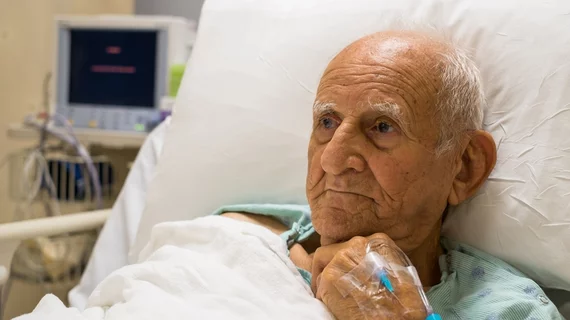Most heart failure patients miss out on guideline-recommended palliative care
Over the past decade, the American Heart Association (AHA) and European Society of Cardiology have recommended integrating palliative care into heart failure management.[1,2] Despite these recommendations, the use of palliative care for heart failure remains low in the United States. Racial and geographic variations in access and use of palliative care are also pronounced, highlighting health disparities.
These were the findings of a recent study in the Journal of the American Heart Association.[3] Researchers at Saint Louis University led the study and said only one in eight patients with heart failure in the United States receive palliative care consultations within five years of diagnosis. Their study highlights the alarmingly low uptake of palliative care among adults with heart failure in the U.S., especially compared to patients with cancers that have the same mortality rates.
The study also pointed out significant racial and geographic disparities. Black patients were 15% less likely to receive palliative care compared to their white counterparts. They said this disparity is particularly concerning given the higher cardiovascular risk and mortality rates in the Black population.
"To our knowledge, this is the first study to investigate the uptake of palliative care consultation following a heart failure diagnosis in the general U.S. population. Unlike the previous studies focusing on Medicare beneficiaries or veterans, our research provides a more general insight into early palliative care integration for heart failure across the entire nation," explained senior author Zidong Zhang, PhD, a research scientist at the Advanced HEAlth Data (AHEAD) Research Institute at Saint Louis University School of Medicine, in a statement. "Anecdotal reports suggest that most patients with heart failure do not receive palliative care, and those who do typically receive it only in the last two to three weeks of life."
Zhang et al. conducted a retrospective cohort study in a national all‐payer electronic health record database to identify adults with newly diagnosed heart failure between 2011 and 2018. They followed 127,712 patients for a median of 792 days, of whom 18.3% received palliative care counseling in five years. There was a shorter time to receiving counseling with diagnoses between 2016 to 2018, compared with 2010–2015.
The study found patients who did not have cardiogenic shock, but receive inotropic therapy, were less likely to have palliative care consultations. However, among patients treated for cardiogenic shock with advanced therapies, the likelihood of receiving palliative care almost tripled. Zhang and his co-authors attributed this discrepancy to the intended purpose of treatment and clinical inertia in managing complex cases.
Zhang said the latest AHA guidelines emphasize the early integration of palliative care consultation for all patients with heart failure, particularly when evaluating patients for advanced therapies. But this study shows a significant gap between these recommendations and real-world practice. Zhang said there's a need for systemic reform to achieve early integration of palliative care and timely consultation.
"These might include removing barriers in the payment system for concurrent care, assisting physicians in determining when to initiate the palliative care conversation with patients, and, in a health system, expanding outpatient and community-based palliative care service and streamlining the referral and transition of palliative care from cardiac care to inpatient service to community," he said.

